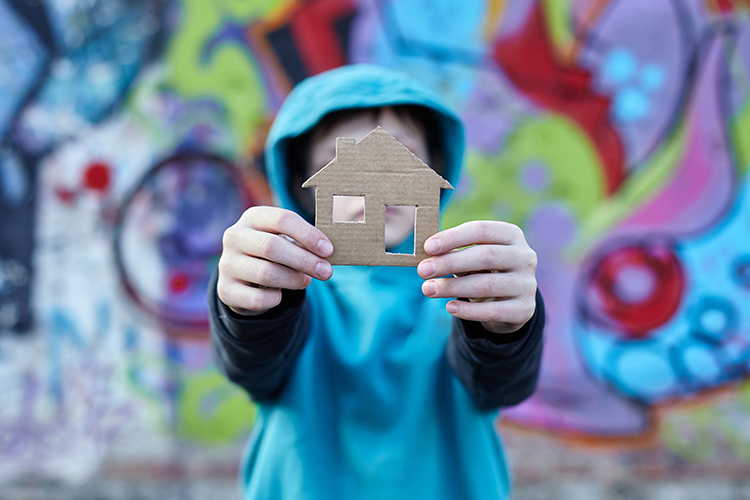Preventive action is needed to reduce youth homelessness

Image from Shutterstock.
The ABA House of Delegates passed a resolution Monday urging governmental bodies to repurpose funding to support prevention approaches aimed at dramatically reducing the number of youth experiencing homelessness each year and enhancing their safety, permanency and well-being.
Resolution 604, which was approved by a 349-5 vote at the ABA Midyear Meeting, also calls on governments to reduce the disproportionate impact of homelessness on youth of color, Indigenous youth and youth who identify as LGBTQ.
The resolution was submitted by the ABA Commission on Homelessness and Poverty. It was co-sponsored by the Section of Civil Rights and Social Justice, the Criminal Justice Section and the Section of Litigation.
“Currently, most policy is focused on making youth homelessness rare, brief and nonrecurring once youths have already experienced homelessness,” said Gabriella McDonald, a member of the Commission on Homelessness and Poverty. “But we can do better. Specifically, this resolution seeks to ensure that youth who are exiting systems like the foster care system, the juvenile justice system and mental health systems are exiting into safe and stable homes.”
A University of Chicago nationwide study released in 2017 found that 700,000 youth aged 13-17 and 3.5 million young adults ranging in age from 18-25 had experienced some form of homelessness over a 12-month period.
Follow along with the ABA Journal’s coverage of the 2022 ABA Midyear Meeting here.
The study, titled Missed Opportunities: Youth Homelessness in America, reported that African American youth were particularly overrepresented among racial and ethnic groups, with an 83% increased risk of having experienced youth homelessness. Hispanic youth were also at higher risk of experiencing homelessness than non-Hispanic youth, the study found.
Additionally, lesbian, gay, bisexual and transgender youth had a 120% increased risk of experiencing homelessness compared to youth who identified as heterosexual and cisgender, according to the University of Chicago study.
Historically, government efforts to address youth homelessness have focused on policy and practice steps after homelessness has occurred, according to the Resolution 604 report.
“Yet preventing as much youth homelessness as possible can dramatically improve outcomes, even beyond housing status, for millions of young people and their families,” the resolution report says. “To do so, there must be appropriate public system ownership as well as funding and policy to directly increase research, community-based services, system reform and data-sharing and collaboration.”
Resolution 604 also urges local bar associations and attorneys to commit themselves to reviewing the ABA’s model state statutes that may be adopted by states to advance rights and resources that prevent youth from experiencing homelessness and may minimize the need for further litigation or direct representation.
“We want to make sure that bar associations and lawyers are finding ways to increase support for children’s lawyers and using their drafting and advocacy skills to amend state and local statutes to uniformly advance rights and resources for youth experiencing homelessness,” said McDonald, pro bono and new projects director at Texas Appleseed.
Additionally, the resolution urges the justice system to consider barriers to youth achieving stable family support; to work to ease access to petition courts to review kinship and family custody matters that resolve guardianship responsibilities; and to allow youth access to vital records and legal identification for matters of education and receipt of public assistance.
Write a letter to the editor, share a story tip or update, or report an error.


